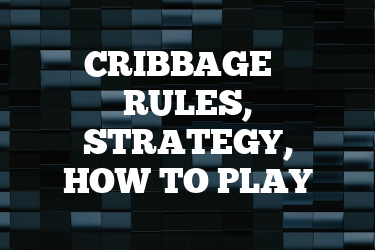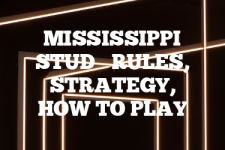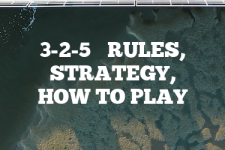Understanding Cribbage Rules, Winning Strategies, and How-to-Play Instructions
Introduction
As a card game enthusiast, I’ve always been fascinated by the unique blend of strategy and luck that defines Cribbage. This classic game, which has been around since the 17th century, is a compelling mix of skill, tactics, and a dash of chance.

It’s played with a standard 52-card deck and can accommodate between two to four players. The game is known for its distinctive scoring board, and the objective is to be the first player to score 121 points.
A lot of Cribbage players I know also enjoy Rummy, though in my opinion no card game quite matches the elegance of Cribbage. If you want to diversify into a similar board game, I recommend Arboretum.
Quick Tip for Cribbage
Always remember, in Cribbage, it’s not just about the cards you hold, but also about how you play them. A good strategy can often turn a mediocre hand into a winning one.
Rules for playing Cribbage
The rules of Cribbage are fairly straightforward. Each player is dealt a hand of six cards, from which they must choose four to keep, discarding the rest into the ‘crib’. The crib acts as an extra hand for the dealer, who changes each round. The non-dealer then cuts the deck to reveal a ‘starter’ card. If this card is a Jack, the dealer scores two points. The players then take turns playing cards, trying to reach a total of 31. Points are scored for combinations such as pairs, runs, and totals of 15. After all cards are played, players score their hands and the crib, counting combinations of cards that total 15, runs, pairs, and flushes.
Points Scoring in Cribbage (by card combination)
As I mentioned, points are scored based on various card combinations during the play and the show phase of the game. Here’s a breakdown of the common point-scoring combinations:
- Fifteens: If the combination of cards played totals 15, the player scores 2 points. For example, if you play a 5 and a 10, or a 7 and an 8, that totals 15 and earns you 2 points.
- Pairs: When two or more cards of the same rank are played in succession, the player scores points for pairs. A pair is worth 2 points, three of a kind (also known as a “pair royal”) is worth 6 points, and four of a kind (known as a “double pair royal”) is worth 12 points.
- Runs: A run is a sequence of consecutive cards in any order. For example, playing 5, 6, and 7 would give you a run of 3, scoring 3 points. Runs must consist of at least three cards to score, and longer runs score accordingly. A run of four cards scores 4 points, and so on.
- Flush: If all cards played in a round are of the same suit, the player scores points for a flush. Each card in the flush scores 1 point. If the starter card (the card turned up at the start of play) also matches the suit of the flush, the player scores an additional point.
- Nobs: If a player holds a Jack in their hand that matches the suit of the starter card, they score 1 point for “nobs” or “his heels.”
- His Nobs: If the Jack that matches the starter card is held in the hand of the player who did not deal, that player scores 2 points instead of 1 for “his nobs.”
- Go: During the play phase, if a player cannot play a card without the cumulative count exceeding 31, they say “Go” and their opponent scores 1 point. The opponent continues playing until they can’t play without exceeding 31, and then the roles reverse.
- Last Card: If a player plays the last card in their hand, they score 1 point.
- His Heels: This refers to the two points scored if the dealer’s hand contains a Jack that matches the starter card.
These are the main point-scoring combinations in Cribbage, but can of course vary massively by house rules or regional variations.
The Deal for Cribbage
The deal in Cribbage rotates clockwise around the table, with each player getting a turn to deal. The dealer shuffles the deck and the player to their left cuts it. The dealer then deals six cards to each player (or five in some variations). Each player then discards two cards into the crib, which will later be used by the dealer.
How to Play Cribbage
- Setup: Each player starts at the beginning of the score track on the board, and the order of play is determined by cutting the deck.
- Gameplay: Players take turns playing cards, trying to reach a total of 31. Points are scored for combinations such as pairs, runs, and totals of 15.
- End of the Game: The game ends when a player reaches 121 points. If no player reaches 121 points after the final round of play, the player with the highest score wins.
- Scoring: Points are scored for card combinations during play, as well as in the players’ hands and the crib after play.
How to Win at Cribbage
Winning at Cribbage requires a blend of strategic thinking, careful card play, and a bit of luck. One key strategy is to aim for card combinations that give you the most points. It’s also important to consider what cards to discard into the crib, as these can give additional points to the dealer. Additionally, keeping track of what cards have been played can help you make better decisions during the play phase of the game.
Winning at this game is not only a matter of chance, but also involves strategic thinking, astute card play, and a bit of luck.
In scoring the most points, the 15s and pairs are considered high-scoring combinations. A 15 combination happens when the cards in your hand add up to 15, giving you two points. Pairs, on the other hand, earn you two points for every pair you have. Moreover, if you manage to get three of a kind, you get six points, while four of a kind earns you twelve points.
Another key strategy in Cribbage is to carefully consider what cards to discard into the crib. The crib is a separate hand that the dealer can use to earn extra points after all other hands are counted. Therefore, discarding high-value cards into the crib can potentially boost the dealer’s score, so it’s crucial to consider this when deciding which cards to discard.
You can predict what cards your opponent might still have based on what has already been played. This can inform your decisions on which cards to play from your own hand, potentially preventing your opponent from scoring points or even setting yourself up to score more points on your next turn.
Lastly, the element of luck in Cribbage cannot be ignored. The shuffle and deal of the cards can significantly sway the outcome of the game. However, a player with a good understanding of the game’s strategies and a keen eye for detail can still manage to turn the tide in their favor, regardless of the hand they’re dealt.
Best Strategies for playing Cribbage game
There are several strategies that can increase your chances of winning at Cribbage. One is to try to control the pace of the game by deciding when to play certain cards.
For example, holding onto a 5 or a 10-card until later in the game can prevent your opponent from scoring a 15.
Another strategy is to try to trap your opponent by playing a card that you think they might pair, then scoring three points by playing a third matching card.
Finally, it’s always a good idea to keep track of what cards have been played, as this can help you predict what cards your opponent might have left.
Game Variations
There are several variations of Cribbage that can add an extra layer of challenge and excitement to the game. Some of these include “Five Card Cribbage”, “Four-Handed Cribbage”, and “Lowball”, where the aim is to score as few points as possible. Each of these variations has its own unique set of rules and strategies, making them a great way to mix up your Cribbage games.
Five Card Cribbage, as the name suggests, involves playing with five cards instead of the usual six. Each player discards one card to the crib as usual, but the extra card can add a new level of complexity to the game. This variation requires players to think more strategically about which cards to keep and which to discard, as the additional card can significantly change the outcome of the game.
Four-Handed Cribbage is a variation played with four players. This version is typically played in pairs, with partners sitting across from each other. The game follows the same basic rules as standard Cribbage, but the added players introduce new dynamics. For instance, communication and teamwork become crucial elements, as partners must work together to create the best possible hands. This version of Cribbage can be quite challenging, but it is also a lot of fun, especially when played with friends or family.
Lowball Cribbage is another interesting variation where the goal is to get as few points as possible, in stark contrast to the objective of the standard game. This variation requires a complete reversal of usual strategies. Players must aim to avoid standard scoring combinations and instead focus on creating hands that yield the lowest possible points. This can be a refreshing change for experienced players who are used to striving for high scores, and can bring a fresh perspective to the game.
Each of these variations of Cribbage offers a unique set of rules and strategies, encouraging players to think differently about the game. Whether you’re a seasoned player looking for a new challenge or a beginner who wants to explore different ways to play, these variations can provide a great way to mix up your Cribbage games and keep them exciting.
If you’re looking to branch out from Cribbage, the board game Suburbia, which I’ve written a guide on previously, has a really interesting point scoring system that you might find engaging. Check it out.
Scenarios for Cribbage
There are countless scenarios that can arise in a game of Cribbage, each requiring its own strategy. For example, if you’re dealt a hand with no 15s or pairs, you might decide to play defensively, trying to prevent your opponent from scoring points rather than trying to score points yourself. On the other hand, if you’re dealt a hand with several 15s or pairs, you might decide to play aggressively, trying to score as many points as possible before your opponent has a chance to catch up.
Frequently Asked Questions about playing Cribbage game
- What is the best hand in Cribbage? The best hand in Cribbage is 29, which is achieved by holding three 5s and a Jack, with the starter card being the other 5 of the same suit as the Jack.
- What is the ‘crib’ in Cribbage? The crib is an extra hand that belongs to the dealer. Each player discards two cards into the crib after the deal.
- What is a ‘skunk’ in Cribbage? A skunk in Cribbage is when one player wins by more than 30 points, and it often counts as two games won instead of just one.
- Can you win Cribbage in the play phase? Yes, it’s possible to win Cribbage during the play phase if a player reaches 121 points before the show phase.
- What happens if both players reach 121 points in the same round? If both players reach 121 points in the same round, the player who reached it first is the winner.
External Links
For more information on Cribbage, visit the official American Cribbage Congress website here.
Play Cribbage Online against real people (free, no registration)

Eve Brownlee was a gamer before gaming communities on the internet were a thing. Eve grew up playing traditional, standard deck card games like Rummy and Bezique, taking an interest in the classics Backgammon and Chess. Parlor card games like Bridge continue to keep Eve active in the community. After a long career, primarily in horticulture for USDA in Maryland, Eve now travels and writes on The Pineapple (pineapples.info) and contributes to Quora/Pinterest topics. Contact Eve via email.



